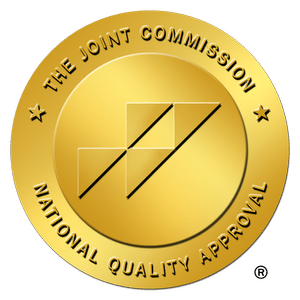Working with the right therapy is crucial in psychological healing, as it aligns therapeutic techniques with individual needs and challenges. Cognitive Behavioral Therapy (CBT) is a well-established evidence-based approach while its derivative, Cognitive Processing Therapy (CPT), has gained well-established acceptance. Each has unique frameworks for addressing mental health and substance abuse issues.
This article compares and contrasts CPT and CBT, providing insights into how they function, their applications, and their effectiveness in facilitating psychological healing. Through understanding their distinctions and similarities, you can make informed decisions together with your mental health caregivers.
What is Cognitive Behavioral Therapy (CBT)?
Cognitive Behavioral Therapy (CBT) is a form of psychotherapy that has become a cornerstone in the treatment of a range of mental health conditions. It is grounded in the concept that our thoughts, feelings, and behaviors are interconnected, and that changing negative thought patterns can lead to changes in feelings and behaviors, thus improving overall mental health.
Origins and Development
CBT’s roots can be traced back to the early 20th century, and then with the development of behavior therapy in the 1950s and cognitive therapy in the 1960s. It was Aaron T. Beck, a psychiatrist, who first developed cognitive therapy in the 1960s as a method to treat depression, observing that patients’ thoughts had a significant impact on their emotions and behaviors. This led to the integration of cognitive and behavioral techniques, forming what is known today as Cognitive Behavioral Therapy.
Key Principles of CBT
CBT is based on several core principles that guide its therapeutic process:
- Psychological problems are based, in part, on faulty or unhelpful ways of thinking.
- Psychological problems are also based, in part, on learned patterns of unhelpful behavior.
- People suffering from psychological problems can learn better ways of coping with them, thereby relieving their symptoms and becoming more effective in their lives.
These principles underpin a therapeutic approach focused on identifying, challenging, and modifying negative thought patterns, beliefs, and behaviors.
The CBT Process
A typical CBT session involves several steps, usually structured to maximize the therapy’s effectiveness. These steps include:
- Assessment and Goal Setting: The therapist and client collaborate to understand the client’s current issues and set clear, achievable goals for therapy.
- Identification of Negative Thought Patterns: Clients learn to recognize their distortions in thinking that are creating problems, and to see reality more clearly.
- Challenging Negative Thoughts: Through techniques like Socratic questioning, clients test the reality of their negative thoughts and begin to develop a more balanced perspective.
- Behavioral Experiments: Clients are encouraged to test out new ways of behaving that are aligned with their more balanced thoughts and beliefs.
- Skill Development: Clients learn new skills to cope with difficult situations, reduce stress, and manage emotions effectively.
- Homework Assignments: Tasks are assigned between sessions to practice these new cognitive and behavioral strategies in real-life situations.
This structured approach helps clients build the skills necessary to deal with their issues more effectively and independently over time.

Conditions Best Suited for CBT
CBT has been extensively researched and is considered an effective treatment for a wide range of mental health issues, including:
Anxiety Disorders: Including generalized anxiety disorder (GAD), panic disorder, social anxiety disorder, phobias, and post-traumatic stress disorder (PTSD).
Depression: CBT is one of the most effective treatments for depression, addressing negative thought patterns that contribute to feelings of hopelessness and helplessness.
Obsessive-Compulsive Disorder (OCD): CBT, particularly Exposure and Response Prevention (ERP), is considered a first-line treatment for OCD.
Eating Disorders: CBT is used to address the thought patterns and behaviors associated with eating disorders like anorexia nervosa and bulimia nervosa.
Substance Abuse Disorders: CBT helps individuals struggling with substance abuse by focusing on the thoughts and situations that lead to substance use and developing coping strategies.
The versatility and efficacy of CBT in treating a wide range of conditions make it a popular choice among mental health professionals and clients alike. Its structured, goal-oriented approach empowers clients to become active participants in their healing process, equipping them with the skills needed for lasting change.
Cognitive Behavioral Therapy is a testament to the profound impact of our thoughts on our emotional and behavioral health. Its evidence-based, practical approach to solving psychological problems has made it a vital tool in the field of mental health, offering hope and healing to those struggling with various conditions. Through its application, CBT not only alleviates symptoms but also fosters resilience, self-awareness, and a greater sense of well-being.
What is Cognitive Processing Therapy (CPT)?
Cognitive Processing Therapy (CPT) is a specialized type of cognitive-behavioral therapy aimed at helping individuals recover from post-traumatic stress disorder (PTSD) and related conditions. It focuses on how a person perceives and copes with trauma, emphasizing the importance of understanding and challenging maladaptive beliefs related to traumatic events. This therapy was developed in the 1980s by Dr. Patrica A. Resick to address the complex cognitive and emotional needs of trauma survivors, particularly women.
Origins and Development
CPT was originally designed to address the psychological distress associated with sexual assault and has since been expanded to treat PTSD resulting from various types of trauma.
The therapy draws on the principles of cognitive behavioral therapy, focusing on the specific needs of individuals struggling with the aftermath of experiencing traumatic events. Its development was motivated by the recognition that trauma survivors often grapple with persistent negative thoughts and beliefs about themselves, others, and the world, which contribute to their emotional and psychological difficulties.
Key Principles of CPT
The core concepts of CPT revolve around understanding and transforming the maladaptive beliefs and patterns of thinking that are common among individuals with PTSD. These include:
- Recognition of “Stuck Points”: Identifying the specific thoughts and beliefs that keep an individual stuck in the cycle of PTSD.
- Understanding the Impact of Trauma: Learning how traumatic events have influenced thoughts, emotions, and behaviors.
- Challenging and Modifying Maladaptive Beliefs: Actively questioning and reevaluating beliefs about the self, others, and the world that are distorted or unhelpful.
- Developing a New Perspective: Constructing a more balanced and realistic understanding of the traumatic event and its impact.
These principles guide the therapeutic process, helping individuals rebuild their sense of self and learn more adaptive ways of coping with the memories and impacts of trauma.
The CPT Process
CPT typically unfolds over 12 to 16 sessions, each structured to progressively help individuals understand and change their thoughts related to trauma. The process includes:
- Introduction to CPT Concepts: Educating clients on the nature of PTSD and the role of thoughts in sustaining symptoms.
- Identification of Stuck Points: Clients learn to recognize the specific thoughts that contribute to their ongoing distress.
- Writing Impact Statements: Clients write about the impact of the trauma on their beliefs about themselves, others, and the world.
- Challenging Beliefs: Using worksheets and discussions, clients practice identifying and challenging their stuck points and maladaptive beliefs.
- Constructing a New Narrative: Clients write a detailed account of their traumatic event, which is then used to challenge distorted thoughts and beliefs.
- Building Skills in Challenging Beliefs: The focus is on applying the skills learned to various beliefs across different areas affected by the trauma (safety, trust, power/control, esteem, and intimacy).
- Graduation and Looking Forward: Clients review their progress, discuss future goals, and plan how to maintain their gains and cope with potential setbacks.
This structured approach enables individuals to gradually dismantle the harmful thought patterns that fuel PTSD, leading to significant improvements in symptoms and quality of life.
Conditions Best Suited for CPT
While CPT was initially developed to treat PTSD, its applications have broadened to include a variety of trauma-related conditions, including:
- Post-Traumatic Stress Disorder (PTSD): CPT is highly effective in reducing the symptoms of PTSD, including re-experiencing, avoidance, negative cognitions/mood, and hyperarousal.
- Complex PTSD: For individuals with prolonged or repeated trauma exposure, CPT can help address the deep-seated beliefs and emotional dysregulation associated with complex PTSD.
- Other Trauma-Related Issues: CPT has been adapted to help individuals with other forms of trauma-related distress, such as those stemming from military combat, natural disasters, and personal loss.
CPT’s effectiveness across these conditions lies in its focused approach to transforming the cognitive and emotional aftermath of trauma. By directly addressing the thoughts and beliefs that perpetuate PTSD symptoms, CPT facilitates profound healing and recovery, allowing individuals to regain control over their lives and move forward with a renewed sense of purpose and resilience.
Cognitive Processing Therapy represents a powerful intervention for those struggling with the effects of traumatic experiences. Through its structured, evidence-based approach, CPT offers a path to understanding and overcoming the cognitive and emotional barriers to recovery, highlighting the capacity for change and growth in the aftermath of trauma.
CBT vs CPT
Cognitive Behavioral Therapy (CBT) and Cognitive Processing Therapy (CPT) are both prominent forms of psychotherapy grounded in the cognitive-behavioral tradition. They share the fundamental premise that psychological distress is largely influenced by patterns of thought and that by addressing and modifying these patterns, individuals can achieve significant improvements in their mental health. Despite these commonalities, CBT and CPT have distinct characteristics and applications, making them more suitable for different types of individuals and conditions.
Similarities Between CBT and CPT
Shared Goals: Both CBT and CPT aim to alleviate psychological distress through the modification of dysfunctional thought patterns. They strive to empower individuals with skills to change their thinking, leading to improvements in their emotional state and behavior.
Cognitive-Behavioral Foundation: Each therapy is based on the cognitive model of emotional response, which suggests that thoughts, feelings, and behaviors are interconnected. Changes in cognitive processes are seen as key to affecting emotional and behavioral change.
Structured Approach: CBT and CPT are both structured, goal-oriented therapies that involve active collaboration between the therapist and the client. They use homework assignments and specific techniques to encourage the practice of skills learned during therapy sessions.
Focus on the Present: While both therapies may touch upon past experiences, especially those contributing to current psychological issues, they primarily focus on present thoughts and behaviors.
Differences Between CBT and CPT
| Differences | CBT | CPT |
| General vs. Specific Focus | CBT is a more general therapy applicable to a broad range of mental health issues, including anxiety, depression, OCD, and more | CPT, however, is specifically tailored for individuals dealing with PTSD and trauma-related disorders, focusing on overcoming the maladaptive beliefs and feelings resulting from traumatic experiences. |
| Duration and Structure: | The duration and structure of CBT can vary widely depending on the individual’s needs, with some treatments lasting as few as five sessions and others extending over 20 | CPT, on the other hand, has a more consistent duration, typically spanning 12 to 16 sessions. |
| Specific Techniques: | CBT employs a variety of techniques, including cognitive restructuring, behavioral experiments, and exposure therapy | CPT specifically focuses on “stuck points” related to trauma, using techniques like written narratives of trauma experiences and challenging maladaptive beliefs about the trauma. |
Deciding Between CBT and CPT
Choosing the right therapy depends on several factors, including the nature of an individual’s psychological issues, their goals for therapy, and their personal preferences. Here are some guidelines:
Nature of Psychological Issues: If an individual’s primary struggle is with PTSD or trauma-related issues, CPT may be the more specialized and effective choice. For a broader range of psychological issues like depression, anxiety, or OCD, CBT may be more appropriate.
Preference for Focus: Those who prefer a broad focus that encompasses various aspects of their mental health might lean towards CBT. Individuals seeking a therapy that zeroes in on trauma and its impact might find CPT more beneficial.
Therapeutic Engagement: The decision may also hinge on how comfortable an individual feels with the specific techniques and approaches used in each therapy. Personal comfort and the therapeutic relationship are crucial components of successful therapy.
Ultimately, the choice between CBT and CPT should be made in consultation with a mental health professional who can provide guidance based on a thorough assessment of the individual’s needs and circumstances. Both therapies offer powerful tools for overcoming psychological distress, but their effectiveness hinges on their alignment with the individual’s specific challenges and goals.

The Effectiveness of CBT and CPT
The effectiveness of Cognitive Behavioral Therapy (CBT) and Cognitive Processing Therapy (CPT) in the treatment of various psychological conditions is well-documented in scientific literature, underpinning their status as leading interventions in the mental health field. Both therapies are evidence-based, meaning they are supported by rigorous research demonstrating their success in improving the lives of those who undergo these treatments.
Evidence-Based Success
Cognitive Behavioral Therapy (CBT): CBT is one of the most extensively studied forms of psychotherapy. It has been proven effective in treating a wide range of disorders, including anxiety, depression, PTSD, and eating disorders. One meta-analysis indicates that CBT consistently shows significant improvement in symptoms compared to control groups across various conditions. The strength of CBT lies in its structured, time-limited approach and its versatility in treating a plethora of psychological issues by modifying negative thought patterns and behaviors.
Cognitive Processing Therapy (CPT): CPT, a specific form of CBT tailored for PTSD and related conditions, also boasts substantial empirical support. A study showed that CPT significantly reduces symptoms of PTSD, depression, and related conditions. Studies highlight its effectiveness not only in the short term but also in maintaining these improvements at follow-up assessments, emphasizing CPT’s role in fostering long-term healing from trauma.
Success stories
CBT Success Story: “Alex,” a 30-year-old diagnosed with generalized anxiety disorder (GAD), entered CBT feeling hopeless about his constant worry and its impact on his daily life. Through CBT, Alex learned to identify his anxious thought patterns and challenge them. He engaged in behavioral experiments that gradually exposed him to his fears in a controlled manner, helping reduce his anxiety levels.
After 12 sessions, Alex reported a significant decrease in his daily anxiety and an improved ability to manage stressful situations. He credits CBT with giving him the tools to regain control over his thoughts and emotions.
CPT Success Story: “Jordan,” a veteran struggling with PTSD after returning from combat, found solace in CPT. Haunted by memories of trauma and plagued by intense flashbacks and nightmares, Jordan felt disconnected from everyday life. Through CPT, Jordan worked to understand the impact of her trauma on her thoughts and feelings, identifying “stuck points” that kept her from moving forward.
By challenging these beliefs and writing about her trauma, she began to process her experiences and reduce her PTSD symptoms. After completing CPT, Jordan expressed feeling lighter, as if a weight had been lifted, and noted a significant improvement in her relationships and overall quality of life.
In Summary
These anonymized success stories illustrate the real-world impact of CBT and CPT. While individual experiences vary, the consistent theme across both therapies is their ability to empower individuals with the skills and strategies needed to confront their psychological issues, leading to profound and lasting change.
Both CBT and CPT are grounded in extensive research and clinical practice, demonstrating their efficacy across a spectrum of conditions. Their success stories not only highlight the potential for recovery but also offer hope to those seeking help. Whether managing general anxiety through CBT or overcoming trauma with CPT, these therapies provide a path towards healing and resilience, underscored by their evidence-based methodologies and real-world success.
Choosing Corner Canyon Health Centers for Mental Health Therapy
Corner Canyon Health Centers, located in Draper, Utah, offers innovative therapy approaches like CBT and CPT to help you overcome challenges and achieve your goals. Our team of experienced therapists can help you manage anxiety, depression, trauma, and a variety of other mental health conditions. We welcome patients from all over, including those in Dallas, Chicago, New York City, and Miami. Contact Corner Canyon Health Centers today to schedule a consultation and see how we can help you on your journey to wellness.
Key Takeaways
Cognitive Behavioral Therapy (CBT) is a well-established evidence-based approach while its derivative, Cognitive Processing Therapy (CPT), has gained well-established acceptance.
CBT is grounded in the concept that our thoughts, feelings, and behaviors are interconnected, and that changing negative thought patterns can lead to changes in feelings and behaviors, thus improving overall mental health.
CBT has been extensively researched and is considered an effective treatment for a wide range of mental health issues.
Cognitive Processing Therapy (CPT) is a specialized type of cognitive-behavioral therapy aimed at helping individuals recover from post-traumatic stress disorder (PTSD) and related conditions.
CPT focuses on how a person perceives and copes with trauma, emphasizing the importance of understanding and challenging maladaptive beliefs related to traumatic events.
CBT and CPT are both prominent forms of psychotherapy grounded in the cognitive-behavioral tradition.
Choosing the right therapy depends on several factors, including the nature of an individual’s psychological issues, their goals for therapy, and their personal preferences.
The effectiveness of CBT and CPT in the treatment of various psychological conditions is well-documented in scientific literature.
Sources
Hofman, S. et al. 2012. The Efficacy of Cognitive Behavioral Therapy: A Review of Meta-analyses. Cognit Ther Res. 2012 Oct 1; 36(5): 427–440. Published online 2012 Jul 31. doi: 10.1007/s10608-012-9476-1
Asmundson, G. et al. 2018. A meta-analytic review of cognitive processing therapy for adults with posttraumatic stress disorder. Cogn Behav Ther. 2019 Jan;48(1):1-14. doi: 10.1080/16506073.2018.1522371. Epub 2018 Oct 18




